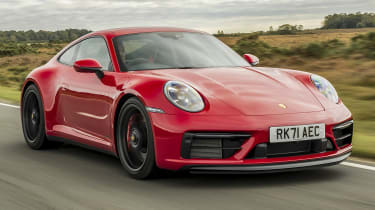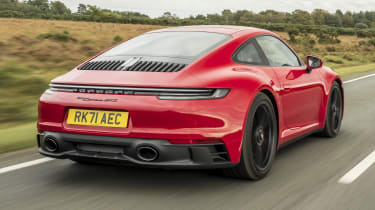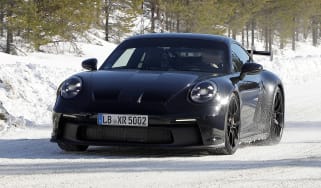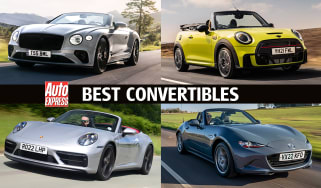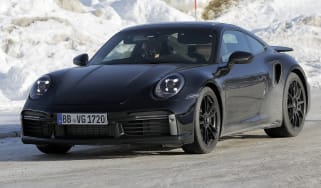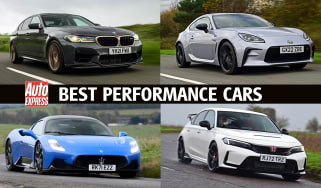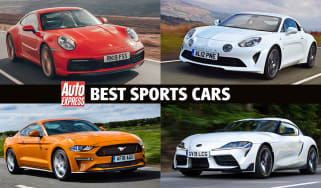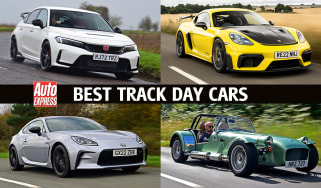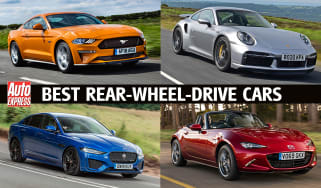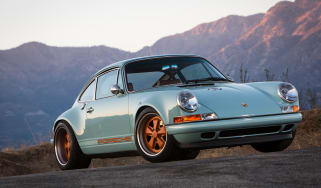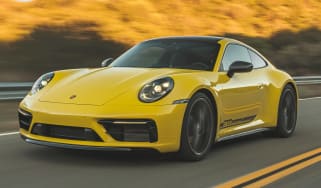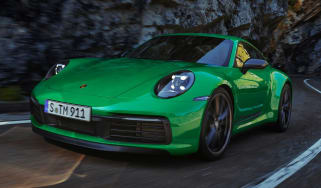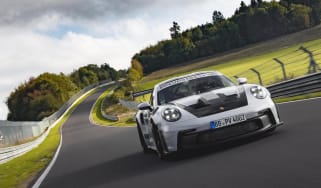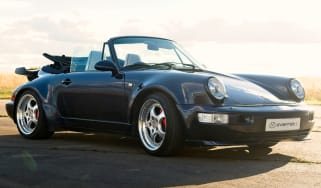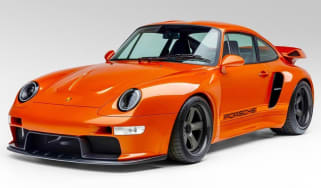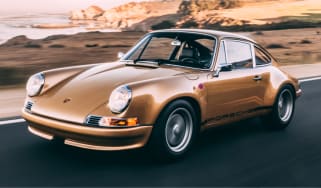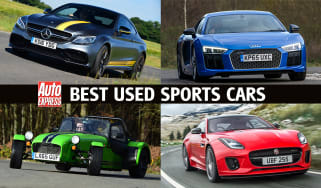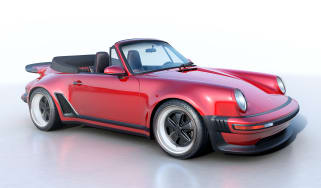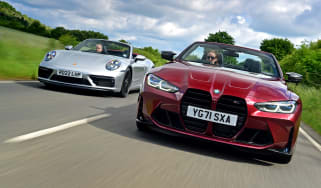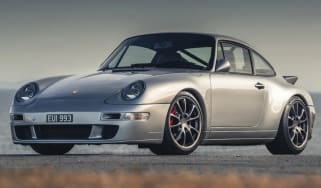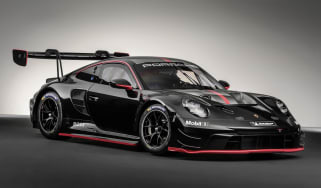Porsche 911 review
It’s the consummate sports car for a reason. The 911 is beautifully built, engaging to drive, desirable and available in just about any form you could wish for
PCP finance available
The Porsche 911 is now into its eighth generation with a fully-formed range that covers everything from boulevard cruising comfort-oriented soft tops at one end to a racing car with number plates at the other. In any form, it’s a car that represents a high watermark of engineering for the whole automotive industry.
The 911 has grown physically over the years. This is no longer a petite sports car, but it’s now one that comes with cutting edge technology and extreme performance. Yet for the true diehard Porsche fans, some say it has also compromised on its real USP – driver engagement – this in some ways is true. The price has also grown, but the 911 is one of those high-end sports cars that feels worth the money, even starting at nearly £100,000.
About the Porsche 911
The 911 is the model that defines Porsche. After nearly 60 years in production it still forms the centrepoint of the brand’s range – a model to which other Porsches are constantly referenced. So despite profitable exploits with SUVs and electric vehicles, Porsche is at its purest in the form of a 911.
A major part of the Porsche 911’s iconic status is built on its technical layout. It’s one of few modern cars with a six-cylinder ‘boxer’ engine that has horizontally opposed cylinders, and one of even fewer that mounts that power unit behind the rear wheels. It’s this distinctive layout that doesn’t only define the 911’s handling characteristics, but also creates some practical advantages the car has over comparable front- or mid-engined rivals. By slinging the engine out behind the rear axle, Porsche is able to squeeze two occasional rear seats inside the cabin, while up front is a sizable boot.
More reviews
The 992 Porsche 911 has grown 20mm longer and 45mm wider on the front axle than its 991.2 predecessor, although the wheelbase is the same. There’s no narrow-body version like there used to be, so the two and four-wheel drive cars are all based on the same shell, which uses a mixed-metal construction with less steel and much more aluminium to help keep the weight increase relatively modest over the 991.2.
The expansive range is split between three body styles: coupe, convertible and Targa. The coupe is the core of the range, is itself offered in two widths, one for the standard Carrera models and the other for the wider top-spec Turbos. Porsche’s GT models actually use both widths – the GT3 narrow and GT3 RS wide. The low-volume Sport Classic, meanwhile, used its own bespoke pressing set to the same dimensions as the wider Turbo during its short lifespan. The 911 Convertible has two width options, as well.
The Targa, while sharing the convertible’s basic structure, swaps out the fully folding fabric roof for a smaller solid folding roof panel that drops below a wraparound glass cover. Aesthetically, it’s defined by its retro-styled roll hoop finished in a contrasting silver or black colour. There’s no Turbo-width option here, as the Targa is only available in various Carrera forms.
As for powertrain options, the range is broadly split into three different categories: Carrera, Turbo and GT. The Carrera is the most diverse, with base, T, S and GTS versions featuring different engine tunes and chassis configurations. The more focused Carrera T model is coupe only, but the rest are available with all three of the available body shapes. Turbo models come in base and S form, and in coupe or convertible body styles. Finally, the GT3 and GT3 RS models from Porsche’s GT division are coupe only and come with fierce naturally aspirated powertrains and ultra-focused chassis tunes.
Just to make things even more complicated, Porsche also produces low-volume models that generally mix and match the 911s various elements to create something new and distinctive, but at a much higher price point. The last Sport Classic was an example of this, which paired the Turbo’s engine with a manual transmission, rear-wheel drive and a bespoke Turbo body without the side intakes. At the other end of the spectrum is the Porsche 911 Dakar, a quasi-offroading variant based on the Carrera GTS but with a rugged look, lifted ride height and bespoke suspension system.
Of course, these set variants are only the tip of a customisation iceberg, with Porsche offering an extensive options list that covers almost every base. You want tinted LED matrix-beam headlights? Easy. Bright green seat belts? Done. Two-tone petrol-blue and tartan fabric carbon bucket seats. No problem. There’s also Porsche’s PTS, or Paint to Sample, program that expands the colour palette to nearly 100 different shades, or you can go full bespoke and get your 911’s paint colour matched to whatever you wish.
Prices range from around £97,000 for the base Carrera to £192,000 for the GT3 RS. The £214,000 Sport Classic is now out of production, but this upper-end of the range will soon be filled with something even more pricey. This makes any sports car falling within that enormous price gulf a potential rival. Alternatives like the Audi R8, Aston Martin Vantage and Mercedes-AMG SL try to tempt different types of 911 customers at different points of the range, but none with anywhere near the variation in their own offerings.
For an alternative review of the Porsche 911, visit our sister site carbuyer.co.uk...
Which Is Best
Cheapest
- Name2dr PDK
- Gearbox typeSemi-auto
- Price£97,000
Most Economical
- Name2dr PDK
- Gearbox typeSemi-auto
- Price£97,000
Fastest
- NameGTS 2dr PDK
- Gearbox typeSemi-auto
- Price£122,000

